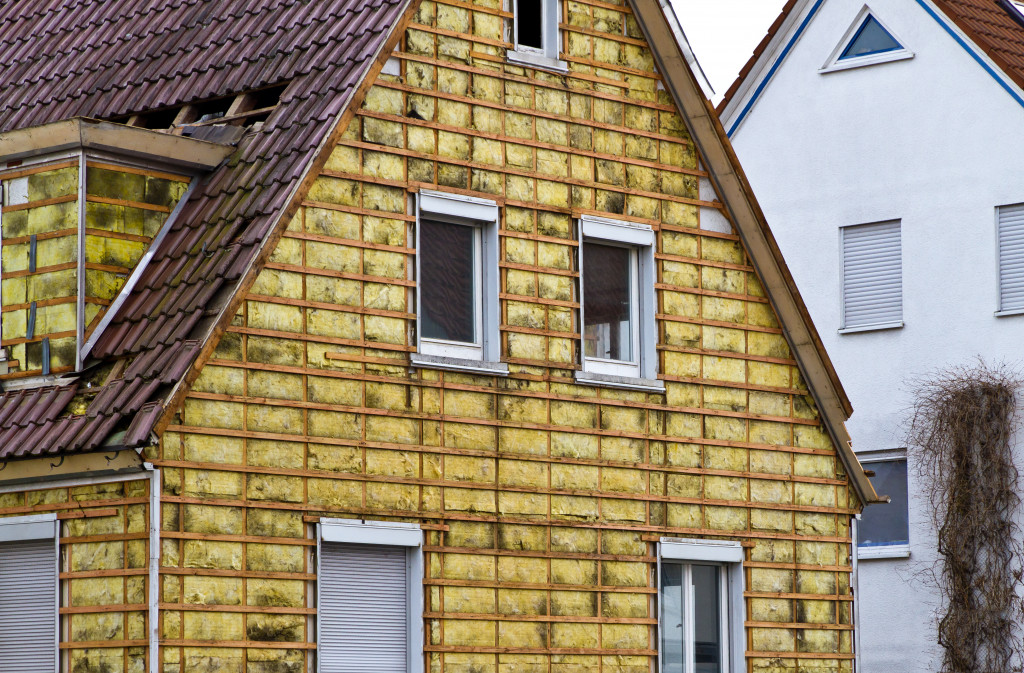- Before starting reconstruction, inspect the structure with the help of a professional building inspector to ensure safety.
- Research the original architectural style of the ancestral home to preserve its unique features.
- Budget for necessary repairs and restorations, and use eco-friendly materials such as recycled wood and solar panels when possible.
- Employ professional contractors experienced in working with historic buildings and for issues such as pest control.
There’s something magical about restoring an old, ramshackle home, envisioning the generations long gone who once graced its halls. It’s no secret that many people have a visceral connection with their roots, and reconstructing an old family home can be an emotionally fulfilling experience.
However, dilapidated homes require renovation and reconstruction, which can be a daunting task. This process involves not only the repair of the structural integrity of the property but also ensuring that it reflects the original architecture of the era it was built in. So, if you are up for the challenge of restoring your ancestral house, here are tips to make it happen.
Conduct a thorough inspection.
Before embarking on any repair work, it’s crucial to thoroughly inspect the structure. This means assessing the roof, foundation, internal and external walls, and all fittings, such as windows and doors.
Engage a professional building inspector to identify any potential safety hazards or issues that need addressing first. You need to ensure the safety of the property before starting any reconstruction work.
Research the original architectural patterns.
Understand the architectural style and design of your ancestral home so that you can authentically preserve its unique features. Thus, research the historical period of your house, interior and exterior architectural designs of the time, and their cultural significance.
For example, homes built during the Victorian era often had high ceilings and ornate detailing, while property dating from the 1930s was more likely to be art deco in design. Therefore, study the periods from which your home was constructed so that you can preserve the original architectural features.
Plan and budget your reconstruction.

Once you have identified the required repairs and restorations, you must budget for them. A thorough plan will ensure that you have all the necessary funding allocated for the essential repairs before embarking on any improvements. Secondly, carefully manage your budget to ensure that you don’t overspend on less important renovations that won’t add value to the property.
Use eco-friendly materials.
While it’s essential to maintain the original architectural design of your ancestral home, it’s also important to use eco-friendly materials. This will not only maintain the integrity of the building but also reduce its carbon footprint. There are many kinds of eco-friendly materials you can use. Here are some examples:
Recycled wood.
Using recycled wood for floors, walls, and ceilings is an excellent way to ensure the home retains its original charm while being environmentally friendly. Recycled wood is often more durable and cost-effective than traditional materials, making it a great choice.
Solar panels.
Adding solar panels to your ancestral home will reduce your energy bills and generate renewable energy. Solar power is an excellent way to help reduce your carbon footprint while providing clean energy for the property.
Low-VOC paints.
Using low-VOC paint is a great way of reducing off-gassing and other potentially harmful air pollutants while adding color to your ancestral home. Low-VOC paints are available in various shades and finishes, making it easy to achieve the desired aesthetic.
Non-toxic finishes.
You can use non-toxic finishes, such as natural oils and waxes, to seal and protect the wood in your ancestral home. This will help maintain the health of the wood for years to come while preserving its original charm.
Using eco-friendly materials ensures that your ancestral home retains its unique charm while reducing its carbon footprint.
Employ the help of professionals.

If you’re not experienced in restoration work, employ a professional building contractor who can handle the restoration process. They can help you understand the original architectural design of your home and guide you on what repairs must be made to stay faithful to the style of the period. Also, ensure your chosen contractor has experience working with historic buildings before engaging them for the job.
Additionally, it’s important to know that building contractors might not be the only professionals you’ll need in the process. Dilapidated ancestral homes are prone to all kinds of issues that require different kinds of professionals. For example, you might need to employ the help of a professional pest control company to identify and address any potential pest infestations. A good pest control company can help ensure that your ancestral home is safe and free from pests.
Restoring an old, dilapidated ancestral home can be a daunting task. But with the right planning and research, you can make it happen quickly. Conducting a thorough property inspection is essential before any repairs or restorations. Researching the original architectural patterns will help preserve its unique features.
Additionally, using eco-friendly materials such as recycled wood and solar panels will reduce your carbon footprint while preserving the charm of your ancestral home. Finally, engaging professional contractors with experience working on historic buildings is key for successful renovations. With these tips, you’ll soon breathe new life into your beloved family home!




